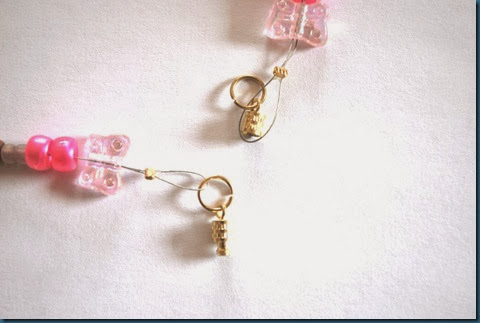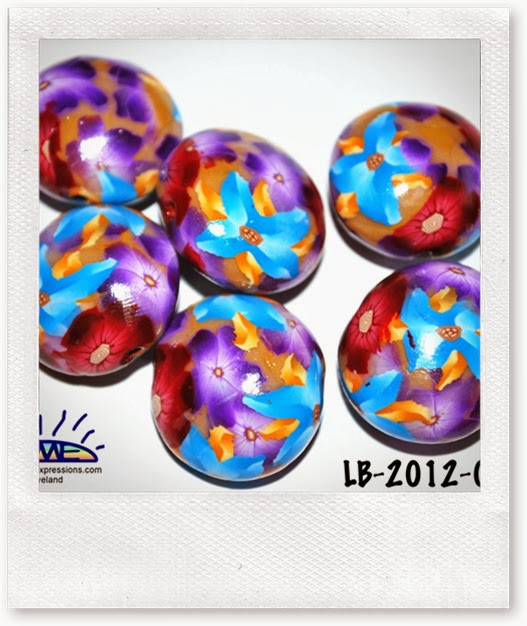The official newsletter of Blue Morning Expressions - where the creativity never stops. Home of handcrafted polymer clay beads, canes and jewelry.
Friday, February 28, 2014
Countdown to Mother's Day 2014
It is that time of the year again! These wonderful gifts are not just for Mother's Day, but they are perfect for any woman in your life, be it friend, sister, auntie, grandmother or your mother-in-law. Enjoy these handmade and vintage gift ideas that tell her that she is special to you.
For this countdown, we are only doing one shop or studio. Thank you :)
get the InLinkz code
Thursday, February 27, 2014
Queen of the Universe and Wild Cherries
What's New in March?
I am waiting on the next big snowstorm and simmering a pot of homemade beef and vegetable soup. The wafting scent is making me very hungry. There will be homemade cornbread to go with the soup. This month has been a busy one for me, as I have been working on new products and new designs.
Most of my effort has been focused on www.x-stitch-patterns.com where I have been redesigning the site and designing new patterns. Most are still in my sketchbook, but a couple have made it to the site.
This particular pattern has also been designed with matching aprons, coffee mug and other kitchenware. The cherries are so cheery!

I cannot wait for the cherries to ripen, so I can make a pie!
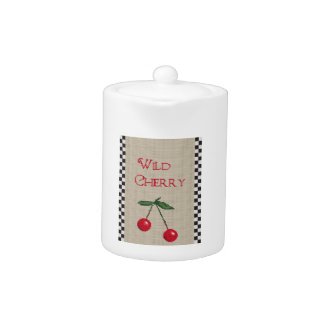
Wild Cherry Tea Pot with Cross Stitch Design by julielcleveland
Shop for Cherry Teapots online at Zazzle.com
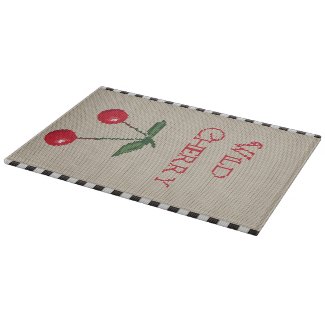
Wild Cherry Cross Stitch Glass Cutting Board by julielcleveland
See other Wild cherries for kitchen Cutting Board at zazzle
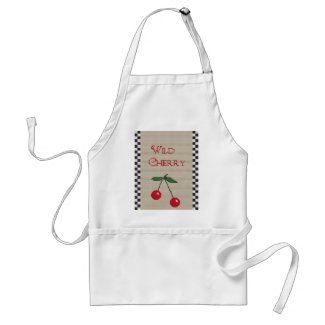
Wild Cherry Cross Stitch Design Kitchen Apron by julielcleveland
Look at Cherries Aprons online at Zazzle.com
Queen of the Universe!
Because of our participation in the 2013 Primetime Emmys, we were one of the artists selected for an invitation to become a product sponsor for the 2nd Annual Queen of the Universe pageant. We worked with the staff in LA to coordinate our participation, and while Blu and I were given VIP passes to the pageant, we are unable to attend. We did send on this beautiful necklace that was designed from our latest canes for spring.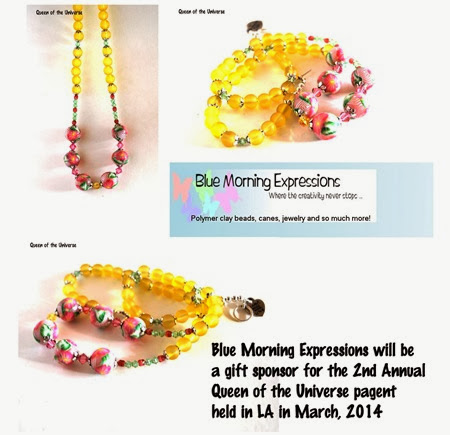
When I was creating the beads, I realized that I really liked them, so I created more than one set. I just couldn’t decide whether I was going to use them or put them in my shop for sale. I was so happy with the way this necklace turned out that I used the second set to make a necklace and earring set. Just in time for Mother’s Day!

Buttons! I had a moment to create some new buttons. More cherries! I also added pink rose and cupcake buttons.
Canes! Pretty new spring canes are being added to beads and thimbles.
Everything is in my Artfire studio, my Etsy shop and my
website:
www.bluemorningexpressions.com
Until next month,
Julie & Blu
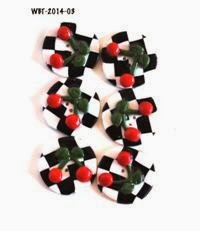
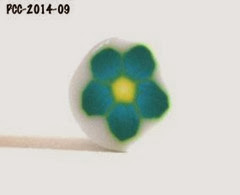
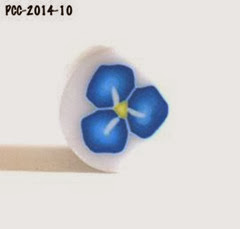
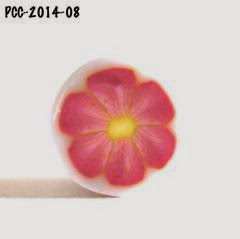
New Products:
New Watches—New beads will start finding their way onto new watch bands
as the spring flower creation begins.
Thimbles — I used my new canes to create some pretty spring collectible thimbles.
![clip_image002[6] clip_image002[6]](http://lh3.ggpht.com/-yRlMh0cYRJs/Uw9fdg-RLtI/AAAAAAAADig/V4cojwRsVEc/clip_image002%25255B6%25255D%25255B5%25255D.jpg?imgmax=800)
![clip_image004[6] clip_image004[6]](http://lh5.ggpht.com/-hm_a3kZV5MY/Uw9fd03GbeI/AAAAAAAADio/Ir1YtKEB5jY/clip_image004%25255B6%25255D%25255B4%25255D.jpg?imgmax=800)
![clip_image006[6] clip_image006[6]](http://lh4.ggpht.com/-ifJQ766EDL8/Uw9fenYKiEI/AAAAAAAADiw/vpUVT4W0YpQ/clip_image006%25255B6%25255D%25255B4%25255D.jpg?imgmax=800)
Friday, February 21, 2014
It’s the Little Things
When you first learn to create jewelry, you may only have a limited supply of beading and finishing materials, but as you get more proficient in your beading experience, you begin to look at the other things that you can add to professionally finish your jewelry. When you first begin, just finishing a necklace or a bracelet with a clasp and a crimp bead may be just swell. It holds and does the job you intended it to do.
This perfect example of exposed crimp beads and bad clasps shows how although the necklace did as it was designed to do, it was pretty butt-ugly. The clasp is a badly designed screw type clasp and it is held on both sides by a poorly improperly closed jumpring. The crimp beads aren’t even folded over properly. They are mangled onto the wires. Wow, what a bad finishing job all the way around!
I just dug out the worse possible example I could find from my first days of making jewelry. Just knowing general principle is not always the best route to success. I won’t even talk about the 3-strand cable that I still have most of my 1,000 foot roll.
Let’s talk about the design.
Beading Wire
You know that there are several types of beading wire for every job. You also know that they come in a variety of cable strengths depending upon the job. Since this post isn’t about the wire, I am only going to give you a couple examples, and we will come back to the proper wire for the job in a later post.



7-strand
21-strand
48-strand
No where do you see 3-strand on the list. What was I thinking? Besides that I have this much money, how much can I buy?
Crimp Beads
Again, this is not about crimp beads either, but you should know that there are different types of crimp beads, and the better quality that you buy, the better they will perform for you. The ones used in the example above are brass gold plated beads.

See last week’s post on the proper Tools of the Trade for more information on crimping pliers.
Clasps
What was I thinking? I was thinking that if I had a clasp that was screwed together, it would stay closed for the necklace I was stringing. Well, I was wrong. The screw clasp that I bought was not nearly of a quality that would hold up when it was worn. It was loose, and it had a tendency to unscrew itself because it did not sit tight. Additionally, if you do not know how to open and close a jumpring, then learn before you start sticking them on everything you make. I so failed in this lesson! Every beading magazine and book has a simple instructions page that shows how to open and close a jumpring. I don’t know why I thought pulling them apart would work.
Again, this post is not about clasps, but we will talk about them later.
Finishing Touches
This post is about finishing your pieces in a professional manner. I dug out one of my first necklaces because I was looking to show you how much better things look when they are professionally finished. It means, you must dig into your pockets and get out enough money to buy some crimp pliers, crimp covers and some of nifty wire guards.
Between the crimp cover and the wire guards, your piece of handcrafted jewelry will escalate in worth because it is beautifully finished.
These two little pieces make all the difference.

Crimp Cover:
This C-shaped piece of metal is hollow and the ends are open. You set it in your crimp pliers and gently close it onto your crimp beads. This makes a smooth, round bead as part of the end of your piece. This cover comes in a variety of plated and precious metals. It comes in several sizes, and it is too inexpensive to scrimp when stocking your designer’s stash. I use it with regular round metal beads on the ends of most of my pieces.

Wire Guard :
This U-shaped piece is hollow on the closed ends and has a channel that your wire will run through as you make your clasp loop. The guard is designed to protect your wire from fraying if the metal you are stringing it through is even the slightest bit rough. These are so inexpensive that you should have hundreds of them on hand. They come in a variety of precious metals and plated. They are designed to match clasps and other findings. They add strength to your piece, and they provide another layer of security that your design will hold together.
As you learn to create jewelry and you buy better tools and supplies, you designs will increase in value. Like anything else, it is a learning experience. If you are sure that you want to continue to make jewelry, then invest in your hobby in order to turn it into a small business.
Enjoy!
Julie and Blu
PS – Buying handmade beads will also help your designs stand out from the crowd!
Monday, February 10, 2014
Tools of the Trade
Everything revolves around having the right tool for the job. A mechanic does not change the oil in a car with a skillet and a spoon. A dentist does not drill a tooth with a pickax. A jewelry designer does not close a jump ring with a hammer. At least none of these folks should use those tools for those jobs. I do think my dentist has a pickax. And a hammer.
There are a million articles online and in magazines about the basic tools that any jewelry designer needs to have tucked in their toolbox. In my case, hanging from my Ott lamp like a line-up of wanted criminals that are going to be told to turn to the left at any moment. Once I spy the one that I need, I snatch it off the rack like a shirt in my closet.
While the lineup is terribly unattractive, it serves a purpose for me. I am usually crunched over under the lamp working on a bead board. Having those tools within a half an arm length of my hands is a tremendous benefit to me. I do not have to fumble for the tool, and it is a simple flip of the wrist to hang it back up again right after I use it.
I have made myself get in the habit of hanging them back up instead of letting them lounge around on my workbench like a tourist around a resort pool. I found that by letting them lay around, they get pushed aside with the beads, wires, chains, clay and a million other transient community members. This way I do not need to hunt for them. They are where they are supposed to be.
Your Tool Kit
We all know the must have tools. The chain nose pliers, the round nose pliers, the flat nose pliers and the wire cutters are all on the recommended tool kit list. There are a variety of additional tools that can be included on the “You Make My Life Easier” list. While I use the pliers, loops and cutters the most for general jewelry creation and repair, I have a few other tools that make my finished product look that much nicer while decreasing my frustration with trying to make the wrong tool do the job.
Instead of knocking the oil filter off with a skillet, a mechanic will remove it with an oil filter wrench. They can remove the filter by hand in most cases, but why bother when you can use a proper tool that does exactly what you want it to do? Likewise, why should we tear up our fingers trying to wire wrap a headpin when we can use a round nose pair of pliers and a chain nose pair of pliers to whisk the wire around the pin nice and neat?
Certainly, there are tools that can be used for any number of applications, but there are certain select tools that are worth investing in if you do a repeated job, well, repeatedly.
Favorite Add On Tools – Crimping Pliers
 Crimp tools are an absolute must for anyone who beads. If you have ever finished a necklace or bracelet with a crimp bead, you know that there is always that little voice in the back of your head that nags about the security of the piece. Especially, if you sell online.
Crimp tools are an absolute must for anyone who beads. If you have ever finished a necklace or bracelet with a crimp bead, you know that there is always that little voice in the back of your head that nags about the security of the piece. Especially, if you sell online.
By crimping the wires together, they should be secure enough to withstand every day wear and tear. However, if you really want to make sure that your crimp bead is securely folded over and really tight, it is best to invest in a pair of crimp pliers. There are several manufacturers of them, and they come in a few sizes and styles.
An economical set of pliers will fold the crimp bead over and then let you position it to where you can tighten the bead closed. It sounds lovely in theory, but if anyone has seen me wrestling with my crimp pliers with my nose a half an inch from the beads will know that it is not always as simple as it sounds. I cannot see the beads or whether I have it in the right section of the pliers, so my crimping is combined with contortions. Thankfully, every set of crimp pliers comes with a cute little instruction sheet that shows where the beads go and how to squeeze them shut for good.
Cheap materials, like the crimp bead, may result in them breaking, so pay a little more for a better bead. Additionally, if you crimp the bead and then go to fold it, you can actually uncrimp it if it is not in the correct position, which can also cause them to break.
The crimp pliers will secure the bead, and it can also double as a crimp cover closer.
Finishing your piece with a crimp cover has to be the easiest way to put a real finishing touch on your jewelry. Those beads can go wonky if they are not closed properly, and I have spent countless hours trying to wrestle one off my design if it went badly. I also have been known to cut the wire and start over. You do not have to do that!! In fact, if your bead goes sidesways, just stop and adjust your crimp pliers at opposite points and gently squeeze it back into shape. It will round back out, and you won’t have to cry.
 Beadalon has a great little crimping tool that contains screws and tiny crimp screws. They can be a bit pricey, but if you are completing a $250 necklace, then pricey is immaterial.
Beadalon has a great little crimping tool that contains screws and tiny crimp screws. They can be a bit pricey, but if you are completing a $250 necklace, then pricey is immaterial.

Another crimp tool that I have is the Bead Buddy Step Crimper, which is a clever tool that helps you to securely close your crimp bead. It takes a long time to adjust to the trick of making it work, but there are several jewelry designers that I know that would not live without it. Myself, I grab the simple ones from my tool rack/Ott Lamp gooseneck.
We will talk about how to use the crimper in another post.
This bracelet has been crimped and covered for a professional finish. Bracelet by Blue Morning Expressions.
Favorite Add On Tools – Jump Ring Opener
 I open my jump rings with whatever tool I have handy. That usually means I have round nose pliers in one hand and either my fingers or my flat nose pliers in another. Then I whip it apart and pop it back together. It is not pretty, and it can be time consuming if I am losing a half a second in production time taking down my pliers and putting them back up again. Time is money!
I open my jump rings with whatever tool I have handy. That usually means I have round nose pliers in one hand and either my fingers or my flat nose pliers in another. Then I whip it apart and pop it back together. It is not pretty, and it can be time consuming if I am losing a half a second in production time taking down my pliers and putting them back up again. Time is money!
The proper tool is so simple, it is almost shameful.
It is a small ring – literally, a ring – that slips on your finger. It has two grooves in it, and you put the jump ring in the groove and gently twist. The ring opens, and it closes the same way that it was opened. No pliers are involved, and since you wear it stuck on your finger, it is exactly where you left it.
Favorite Add On Tools – Split Ring Pliers
Sometimes, I make little clay charms for whatever reason. Lately, I have become obsessed with making purse charms, which means I need to be able to connect all my little dangling beads from the lobster clasp in a nice, neat and orderly manner. I have avoided split rings because they hurt my fingers. I hate them. I cannot get them open. I despise keyrings for this same reason. My hands were not meant to try to wrench open a split ring. I have tried sticking paperclips in there, prying them open with a bamboo stick, using a credit card to open them and every other conceivable way that I thought might let me slip a ring on to the split ring. None of these things worked, and I became frustrated and stopped trying to work with them.
A split ring in use to hold two different bead dangles on a beaded bookmark. Bookmark by Blue Morning Expressions.
 I saw a pair of split ring pliers at the local craft shop and figured that was my answer to a the split ring dilemma. Sure enough, it is. Now, with this handy tool, I am able to open the meanest split ring that I have. Notice the mean little point that it has on it to shove between those impenetrable rings? It has taken some practice to get it opened correctly, but this is a whole lot better than trying to break all of my fingernails prying open a ring that I want to hang a kitty on.
I saw a pair of split ring pliers at the local craft shop and figured that was my answer to a the split ring dilemma. Sure enough, it is. Now, with this handy tool, I am able to open the meanest split ring that I have. Notice the mean little point that it has on it to shove between those impenetrable rings? It has taken some practice to get it opened correctly, but this is a whole lot better than trying to break all of my fingernails prying open a ring that I want to hang a kitty on.
There are a lot of different tools for different applications. It all depends on what type of jewelry design you do. In my case, I do mostly simple wire work and stringing, but I have discovered that even the simplest application is benefited by using the best tool for the job.
If you see your dentist with a pickax or your mechanic with a skillet, you might want to look somewhere else for professional service.
Enjoy,
Julie and Blu
Saturday, February 1, 2014
Win These Handmade Polymer Clay Beads!
I asked for votes, and you voted! It was a close race, but these lovely lentils have won the hearts of those who have cast their ballots.
Now, it is time to enter to win these beads.
You will be the only one with a set of beads like these. Pair these beads with either gold or silver findings; the gold findings will bring out the warmth of the caramels, while a silver setting will brighten up the already vibrant colors of the flowers. Silver is like adding small shiny lights onto the beads. You can use these beads to create a special piece of jewelry just for you, or they would make a lovely bracelet for mom for Mother’s Day.
This set of six polymer clay flower lentil beads have been crafted by hand from a beautiful and rich caramel brown base bead before adding my polymer clay flower canes in reds, blues, purples and oranges to them. Each bead is approximately 20mm, which make them perfect for a bracelet or necklace. They all have my handmade polymer clay canes individually sliced and applied to the beads. Every flower is an original flower from Blue Morning Expressions.
These beads are all hand-sanded and have had a light coat of varathene applied after they were sanded.
Contest starts on February 01, 2014 and runs until midnight February 13, 2014. Drawing will be held on Valentine’s Day, February 14, 2014. The beads will be shipped upon confirmation from the winner. Retail value of the beads is $12.00 USD.Only ONE entry per person and household please and thanks.
Blu and I look forward to all the entries and cannot wait to give these beads away! We want you to have all these wonderful beads in your stash. If these beads are not you, then be sure and check out all the beads we have at www.bluemorningexpressions.com
Enjoy!
Julie and Blu
P.S. - Don't forget to sign up on our mailing list to be notified of all our giveaways and tutorial links.
Subscribe to our mailing list
Stop by and see more lentil beads from Blue Morning Expressions. Hundreds of other beads are available at www.bluemorningexpressions.com

